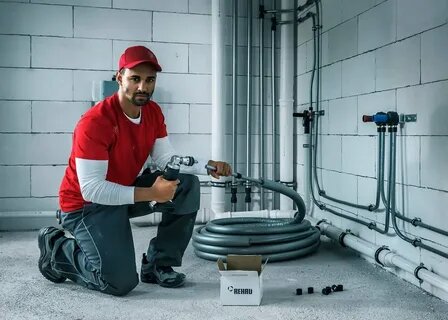Retrofitting older buildings can present unique challenges, particularly when it comes to plumbing systems. As buildings age, so do their plumbing infrastructures, leading to inefficiencies, leaks, or outright failures. To keep an older building functional, compliant with modern standards, and environmentally efficient, retrofitting becomes essential.
In this article, we will discuss how businesses can successfully retrofit older buildings with the help of a skilled commercial plumber. We will also highlight the importance of working with experienced professionals like ADS Wales, a trusted name in the commercial plumbing industry.
1. Assessing the Current State of Your Building’s Plumbing
Before embarking on a retrofitting project, it’s critical to assess the existing condition of the plumbing system. This evaluation provides insights into what needs to be replaced, upgraded, or repaired. Some key areas to focus on include:
- Pipe Condition: Older buildings often have outdated pipes made from materials like lead or galvanized steel. These materials are prone to corrosion, leaks, and water quality issues. A plumber will inspect for signs of wear, rust, or leaks in the pipe network.
- Water Pressure Issues: Older systems may not handle modern water pressure needs. Upgrading the system can help ensure consistent pressure without straining the pipes.
- Sewer Lines: Sewer lines in older buildings may be susceptible to blockages, tree root infiltration, or even collapses. A detailed sewer inspection can prevent potential costly repairs down the road.
- Plumbing Code Compliance: Many older buildings may no longer meet current plumbing codes. A Commercial Plumber will ensure that the retrofitting process addresses these compliance issues to avoid penalties and ensure safety.
A thorough inspection by a qualified plumber from ADS Wales can help you identify areas that require immediate attention and those that can be improved for future efficiency.
2. Upgrading Piping Materials
One of the first steps in retrofitting an older building is upgrading outdated piping materials. Older pipes are often made from materials that are no longer considered safe or efficient, such as:
- Lead: Lead pipes, which were commonly used before the 1980s, pose serious health risks. Lead can leach into the water supply, contaminating drinking water. Replacing these pipes with copper or PEX piping is crucial.
- Galvanized Steel: Galvanized pipes are prone to corrosion and rust, leading to reduced water flow and water quality issues. Over time, rust can clog the pipes and cause leaks.
- Polybutylene: Another outdated material, polybutylene pipes, are known to degrade when exposed to chlorine in the water, leading to frequent bursts or leaks.
By replacing these outdated materials, you ensure that your building’s plumbing system is safe, reliable, and up to modern standards.
3. Installing Water-Efficient Fixtures
In addition to upgrading piping, retrofitting offers an opportunity to install water-efficient fixtures. These fixtures not only reduce water usage but also contribute to lowering utility bills and promoting environmental sustainability.
- Low-Flow Toilets: Installing low-flow toilets can drastically reduce water consumption, which is particularly important for commercial properties with high foot traffic.
- Sensor-Activated Faucets: Sensor faucets prevent water waste by only activating when needed. These are ideal for commercial restrooms where users may leave faucets running.
- Water-Saving Showerheads: If the building has showers, switching to water-saving showerheads can reduce water use without compromising the user experience.
A commercial plumber from ADS Wales can recommend and install the most effective water-saving fixtures based on the specific needs of your building.
4. Addressing Drainage and Sewer Systems
One of the major challenges in older buildings is often found in the drainage and sewer systems. These systems can deteriorate over time, leading to backups, clogs, or even sewage leaks. Retrofitting your drainage system involves:
- CCTV Drain Inspections: Using advanced camera technology, commercial plumbers can conduct thorough inspections of your sewer lines and drainage systems. This allows them to identify any blockages, tree root intrusions, or pipe collapses.
- Trenchless Pipe Repair: Trenchless technology allows plumbers to repair damaged sewer lines without the need for extensive digging. This method reduces disruption and is faster and more cost-effective than traditional excavation methods.
- Stormwater Management: Many older buildings do not have adequate systems for handling stormwater runoff. Retrofitting with modern stormwater solutions, such as new drainage systems, can help prevent flooding and water damage.
By addressing these issues during retrofitting, you can protect your property from costly future repairs and ensure smooth plumbing operations.
5. Bringing the Plumbing System Up to Code
When retrofitting an older building, one of the most important aspects is ensuring the plumbing system meets current building and safety codes. Plumbing codes are regularly updated to enhance safety, environmental impact, and efficiency. Some common code issues in older buildings include:
- Incorrect Pipe Sizing: Older systems may not have pipes appropriately sized for modern water demands. Retrofitting involves installing pipes that can accommodate current water usage without causing pressure drops.
- Backflow Prevention: Current plumbing codes require backflow prevention devices to stop contaminated water from flowing back into the clean water supply. Older buildings may not have these in place.
- Ventilation Systems: Proper ventilation is crucial for safe plumbing operation, especially in commercial buildings. Retrofitting may involve upgrading or installing vents to prevent airlocks and ensure proper drainage.
Ensuring compliance with local plumbing codes is essential to avoid fines, ensure safety, and improve the overall efficiency of the building’s plumbing system. A skilled plumber from ADS Wales can ensure your retrofitting project adheres to all necessary regulations.
6. Upgrading Water Heaters
Older water heaters are typically less energy-efficient and prone to breakdowns. As part of a plumbing retrofit, upgrading to a modern, energy-efficient water heater can provide significant benefits:
- Tankless Water Heaters: Tankless water heaters provide hot water on demand, reducing the energy waste associated with traditional water heaters that store and heat large amounts of water continuously.
- Energy-Efficient Water Heaters: Modern water heaters come with higher energy efficiency ratings, which can help businesses reduce utility costs and their carbon footprint.
- Larger Capacity Water Heaters: If your business has grown or requires more hot water than the current system can handle, retrofitting with a larger capacity water heater can meet your needs more effectively.
Working with ADS Wales, you can explore the best options for upgrading your building’s water heating system to maximize efficiency and reliability.
7. Preventing Future Plumbing Issues
One of the key benefits of retrofitting an older building is the opportunity to prevent future plumbing issues. By modernizing the plumbing system, you can eliminate common problems associated with aging infrastructure, such as frequent leaks, water pressure issues, and inconsistent water temperatures.
- Regular Maintenance: After the retrofitting process, regular maintenance is essential to keeping the system functioning optimally. Schedule routine inspections and cleaning services with a commercial plumber to prevent small problems from becoming larger, more costly repairs.
- Monitoring for Leaks: Consider installing water leak detection systems that can alert you to leaks before they cause significant damage. This is particularly important in older buildings where leaks are more likely to occur.
- Smart Plumbing Solutions: New technology, such as smart water monitoring systems, can detect inefficiencies or malfunctions in real-time, allowing you to address them before they result in bigger issues.
Retrofitting your plumbing with forward-thinking solutions ensures that your business remains efficient, environmentally friendly, and free from major disruptions.
8. Choosing the Right Commercial Plumber for the Job
Retrofitting an older building is not a simple task. It requires a commercial plumber with expertise, experience, and the right tools to ensure a successful upgrade. When selecting a commercial plumber for your retrofitting project, consider the following:
- Experience with Older Buildings: Choose a plumber who has specific experience retrofitting older commercial buildings. This ensures they are familiar with the unique challenges these projects present.
- Comprehensive Services: A reliable commercial plumber should offer a wide range of services, from initial assessments to full system overhauls, and ongoing maintenance after the retrofit is complete.
- Quality of Workmanship: Check for reviews and testimonials from past clients to ensure that the plumber delivers high-quality work on time and within budget.
ADS Wales is a top choice for businesses looking to retrofit their plumbing systems. With a reputation for excellent service, expertise in commercial plumbing, and comprehensive offerings, they can help you tackle even the most complex retrofitting projects.
Conclusion
Retrofitting an older building with a commercial plumber is a smart investment for businesses looking to improve efficiency, ensure code compliance, and prevent future plumbing disasters. By upgrading outdated systems, installing modern fixtures, and working with an experienced plumbing contractor like ADS Wales, you can protect your business from the risks and inefficiencies associated with aging plumbing infrastructure.



